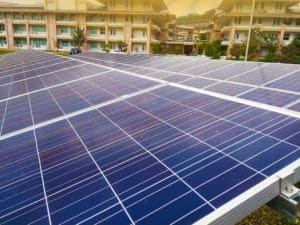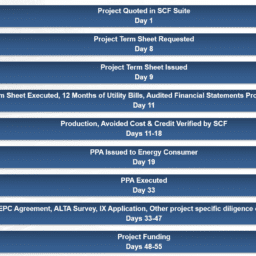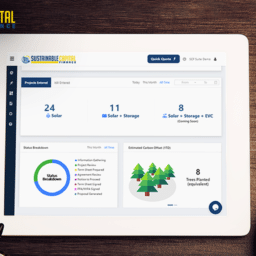 In California, an interesting renewable energy program called RES – BCT was put in place over 10 years ago in 2009. This little known and even less understood program has recently seen an uptick in new applications. The acronym RES – BCT stands for the Renewable Energy Self-Generation Bill Credit Transfer program, and allows a solar system to be built on one parcel, deliver the energy generated from that system directly to the grid, and then have the local Utility provide bill credits to a property owner on a completely different parcel. In many ways, this program acts somewhat like Community Solar in other States.
In California, an interesting renewable energy program called RES – BCT was put in place over 10 years ago in 2009. This little known and even less understood program has recently seen an uptick in new applications. The acronym RES – BCT stands for the Renewable Energy Self-Generation Bill Credit Transfer program, and allows a solar system to be built on one parcel, deliver the energy generated from that system directly to the grid, and then have the local Utility provide bill credits to a property owner on a completely different parcel. In many ways, this program acts somewhat like Community Solar in other States.
While this is an innovative program, it does have a number of limitations as follows:
- The off takers need to be a “Local Government” which is defined as a city, county, school district, local public agency, etc, provided that they are under the same county and same electric service territory. Universities were later added to the program in 2012.
- The local government can install a generator system (PV) on a property owned or controlled by the local government within its geographic boundary. This would be the “Generating account”. It does not matter whether the generating account has on-site load or not.
- The Generating account will have a utility (PG&E, SCE, SDG&E) meter which measures electricity (Kwh) imported and exported from the grid. The exported energy is converted into “Generation Credits”.
- The local government can then choose a maximum of up to 50 “Benefiting accounts” and designate these “Generation credits” to offset energy charges of generation portion (not demand charges) of the benefiting accounts. The benefiting accounts must be within the Local government’s geographical boundaries and on property that it owns, operates, or controls.
- Eligible system size should be within 5 MW and the annual generation should not exceed the annual consumption after combining the generating and benefiting accounts.
- The generating accounts and benefiting accounts can only either participate in RES-BCT or NEM tariff and not both.
 The typical path for this program would be for a developer to secure a land lease with a property owner where the solar system would be installed, and then to negotiate a PPA with a qualified entity for this program such as a School District, Municipality or a University. While the program has restrictions, it also can provide some unique benefits for off takers. If you look at a public school district as an example, the build cost for a solar system(s) can be substantial. For any public-school, an installer needs to take into account the following:
The typical path for this program would be for a developer to secure a land lease with a property owner where the solar system would be installed, and then to negotiate a PPA with a qualified entity for this program such as a School District, Municipality or a University. While the program has restrictions, it also can provide some unique benefits for off takers. If you look at a public school district as an example, the build cost for a solar system(s) can be substantial. For any public-school, an installer needs to take into account the following:
- Prevailing wages are required
- Projects need to meet all Department of State Architecture (DSA) guidelines
- Majority of solar systems installed at public-schools are constructed on carports which are relatively more expensive than roof mounted systems
- The average system size for school projects range from 150 – 750 kW which also drives up relative costs
Based on projects shared with SCF, build costs for public school projects range between $2.75-$3.50/watt based on system size and location. If a developer were to use the RES-BCT program instead, then they could build a ground mounted system at another location, typically for about half the cost of a comparable carport mounted system. There would still be an annual land lease payment required for the land owner, but this is more than offset by the massive reduction in build cost. The savings generated by the dramatically lower build cost can then be passed on to the school district in the form of lowered PPA rates. While a school district is the most common application of this program, any public entity such as a Municipality or a University would also see similar benefits.







